
UF/IFAS Extension Timeline
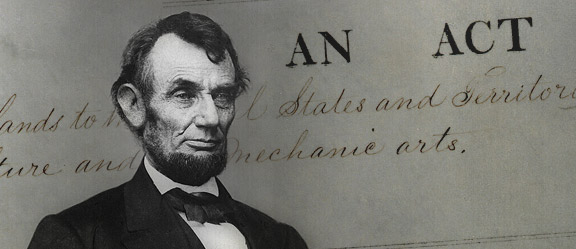
In this photo-illustration, Pres. Abraham Lincoln is seen in front of a portion of the Morrill Act. Credit: UF/IFAS.
• State Normal College for Colored Students (later Florida A&M) established in Tallahassee.
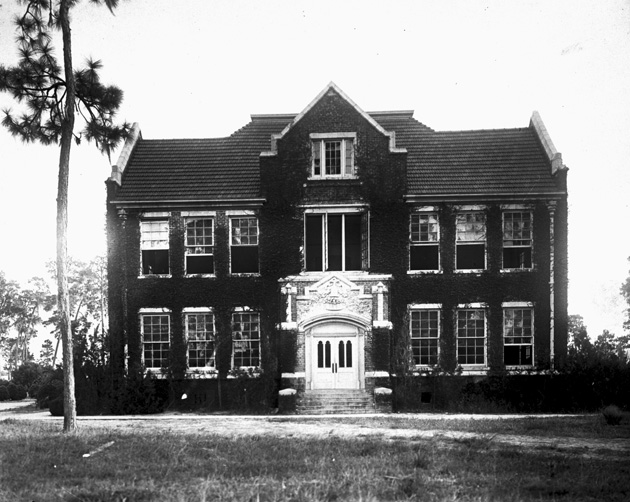
Florida College of Agriculture building on the UF campus, circa 1920s. Credit: UF.
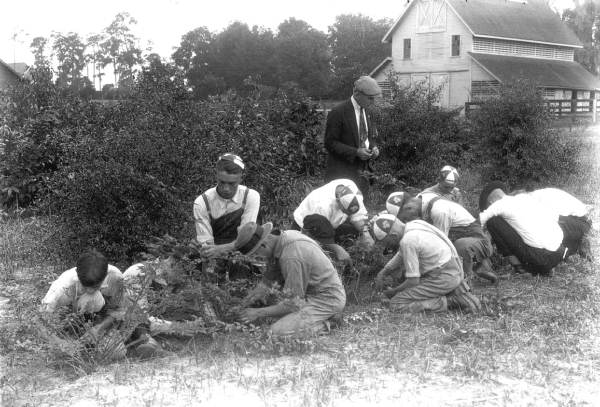
Teaching youth the science of grafting and budding, circa 1900s. Credit: State Archives of Florida
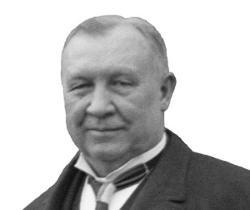
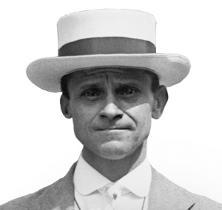
Hoke Smith and Asbury 'Frank' Lever (wearing hat). Credit: UF/IFAS.
• Segregated Extension work with African-American Floridians begins when more than 1,200 youth enroll in farm and home makers' clubs organized through Florida A&M University.
• Extension agents begin program to inoculate hogs against hog cholera epidemic.
• The Citrus Experiment Station, the first permanent branch research station in the state, opens in Lake Alfred.
• U.S. entry into World War I. Extension called on to help increase Florida's food production and preservation.
• First Farmers Week established at University of Florida.
• Capper Volstead Act gave legal status to farm co-ops.
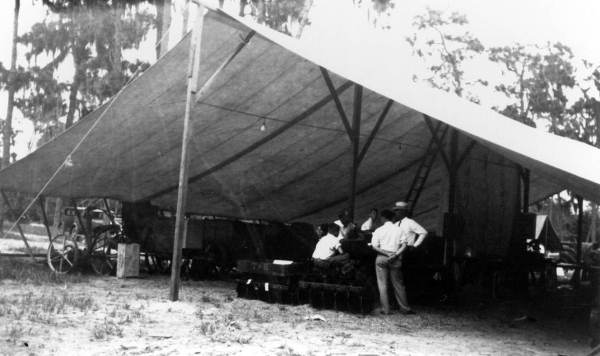
Tractors under a tent during Farmers Week in 1931. Credit: State Archives of Florida
• Everglades Experiment Station established at Belle Glade.
• Florida Extension Service begins radio broadcasts.
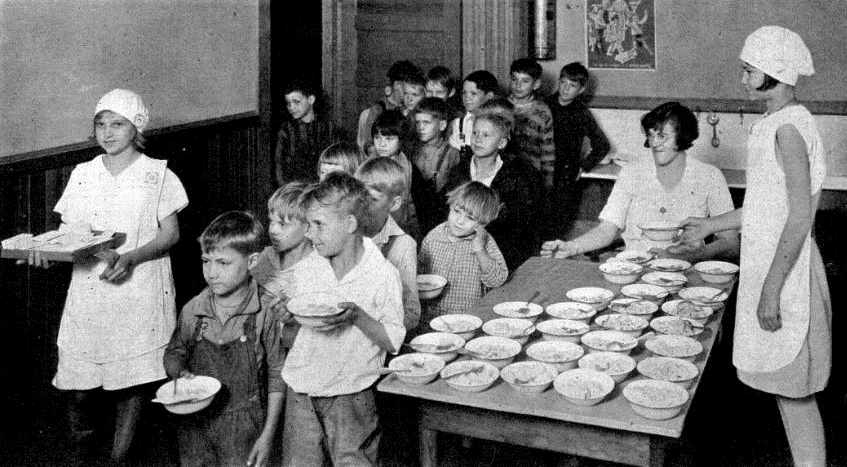
Students line up for a hot lunch served by a home demonstration agent with help from 4-H club members in 1928. Credit: 1928 Extension Annual Report.
• Range Cattle Experiment Station established at Ona._
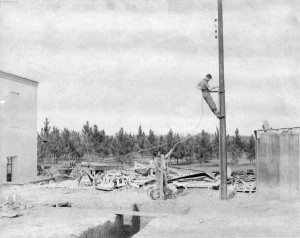
Setting up power lines in Marianna, circa1940. Credit: State Archives of Florida
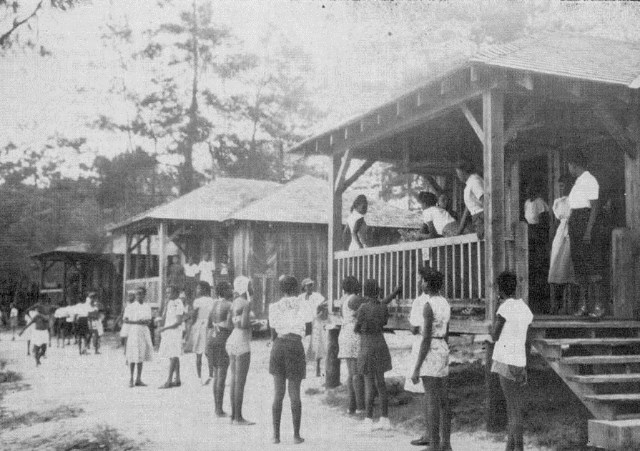
Campers gather around cabins at Camp Doe Lake, in this 1950 photograph. Credit: 1950 Report, Florida Agricultural Extension Service.
• 4-H Camp Cloverleaf opens.
• First Extension-produced television show airs on Jacksonville's WMBR-TV (now WJXT).
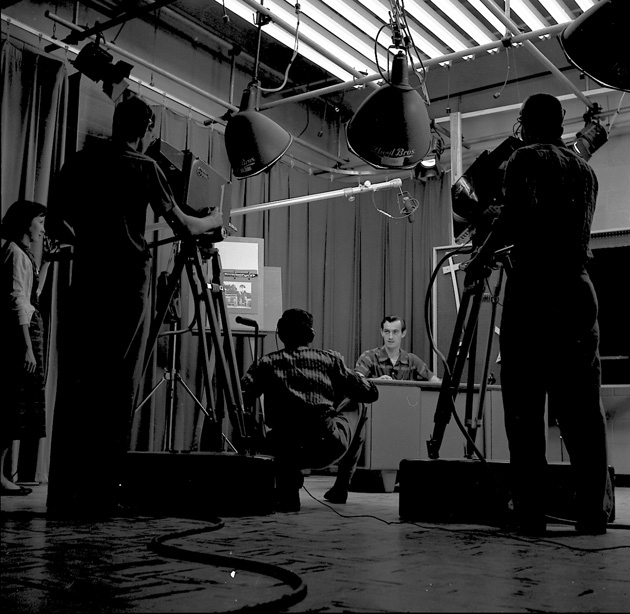
WUFT-TV studio in Gainesville, 1956. Credit: Smathers Archives.
• Smith-Lever Amendment authorizes work with disadvantaged farms and farm families and funds for Extension outside the traditional funding "formula."
• Civil Rights Act outlaws most forms of discrimination by race, religion and gender.
• State Extension Home Demonstration offices move from Tallahassee to Gainesville.
• 4-H becomes co-educational.
• 4-H begins transition out of school-based programs into volunteer-led community project clubs.
• Sea Grant established through the National Sea Grant College and Program Act.
• Florida Agricultural Extension Service changes its name to Florida Cooperative Extension Service in order to reflect the expansion of Extension's mission.
• State Extension Management and Information System computerizes Extension reporting for the first time.
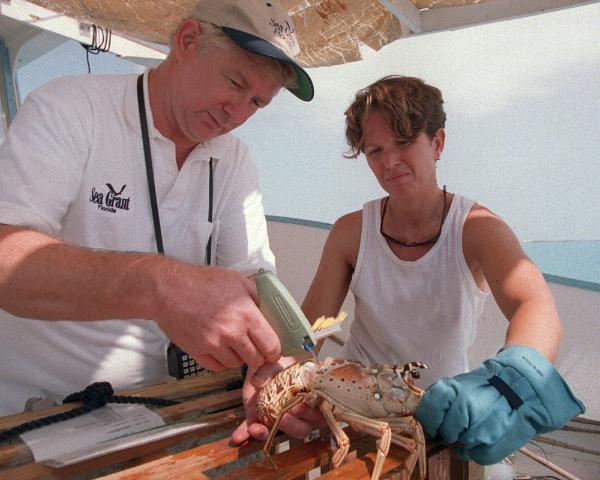
Florida Sea Grant agent Douglas Gregory tags a Florida lobster in the West Sambos Ecological Reserve in Monroe County. Credit: UF/IFAS, Thomas Wright
• Names of all experiment stations and field labs changes to agricultural research and education centers (RECs).
• Agricultural Reorganization Act establishes the Cooperative State Research, Education, and Extension Service (CSREES) to coordinate USDA and state cooperative agricultural research, extension, and education programs.
• Family Nutrition Program (FNP) established for food stamp recipients in 35 Florida counties.
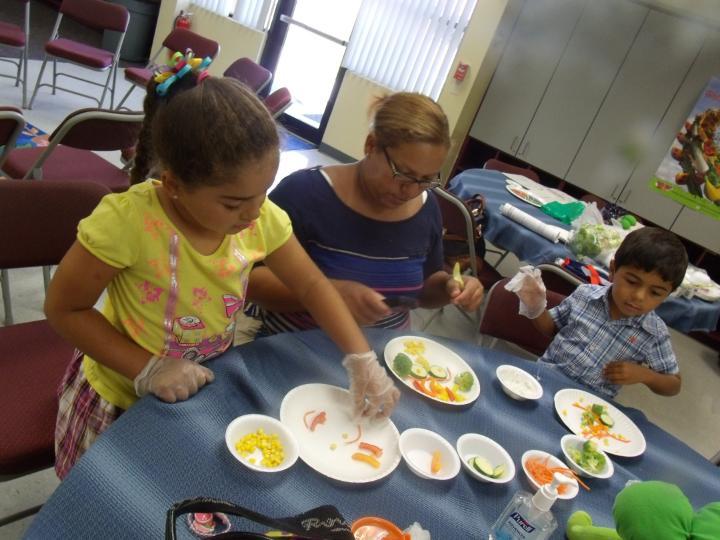
The Family Nutrition Program (FNP) is the Florida component of the USDA's Supplemental Nutrition Assistance Program Education (SNAP-Ed). Credit: UF/IFAS.
• The Extension Data Information Source (EDIS) established as the online source for UF/IFAS Extension's research-based, up-to-date educational resources.
• Fishing For Success, a program that uses fishing and other activities to introduce children to aquatic environmental sciences, begins at UF/IFAS' School of Forest Resources and Conservation.
• 4-H's Operation: Military Kids partners with U.S. Armed Forces to help families adjust to military deployment.
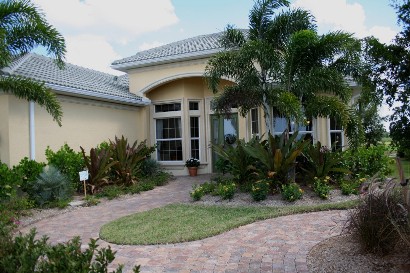
This home in Sarasota's Gran Paradiso neighborhood features Florida-Friendly™ landscaping. Credit: UF/IFAS.
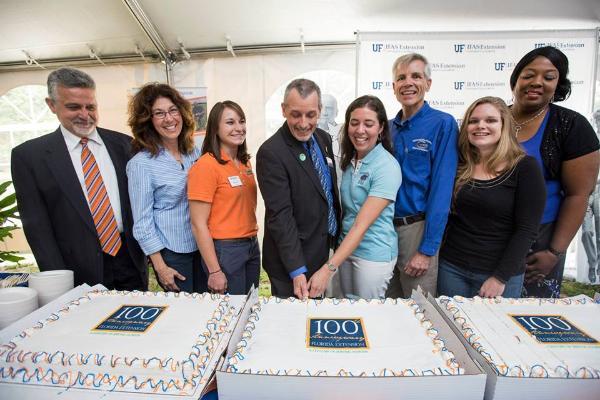
UF/IFAS Dean for Extension Nick Place (center) helps to cut the cake at the anniversary celebration. Credit: UF/IFAS
Learn More
- About Us
- Blog posts
- Educational Resources
- Events, Camps, Clubs, Training and More
- News, Notes and More
- Speakers Bureau
- Staff Directory
- Story Maps
- Timeline of Extension
- Videos
- Volunteers
- How Do I...


 Facebook
Facebook Twitter
Twitter Youtube
Youtube